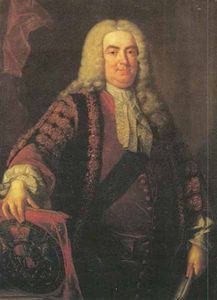PPATH - Prime Path

The ministers of the cabinet were quite upset by the
message from the Chief of Security stating that they
would all have to change the four-digit room numbers
on their offices.
— It is a matter of security to change such things
every now and then, to keep the enemy in the dark.
— But look, I have chosen my number 1033 for good
reasons. I am the Prime minister, you know!
— I know, so therefore your new number 8179 is also
a prime. You will just have to paste four new
digits over the four old ones on your office door.
— No, it's not that simple. Suppose that I change the
first digit to an 8, then the number will read 8033
which is not a prime!
— I see, being the prime minister you cannot stand
having a non-prime number on your door even for a
few seconds.
— Correct! So I must invent a scheme for going from
1033 to 8179 by a path of prime numbers where
only one digit is changed from one prime to the
next prime.
Now, the minister of finance, who had been eavesdropping,
intervened.
— No unnecessary expenditure, please! I happen to
know that the price of a digit is one pound.
— Hmm, in that case I need a computer program to
minimize the cost. You don't know some very cheap
software gurus, do you?
— In fact, I do. You see, there is this programming
contest going on...
Help the prime minister to find the cheapest prime path between any two given four-digit primes! The first digit must be nonzero, of course. Here is a solution in the case above.
1033
1733
3733
3739
3779
8779
8179
The cost of this solution is 6 pounds. Note that the digit 1
which got pasted over in step 2 can not be reused in the last step
– a new 1 must be purchased.
Input
One line with a positive number: the number of test cases (at most 100). Then for each test case, one line with two numbers separated by a blank. Both numbers are four-digit primes (without leading zeros).
Output
One line for each case, either with a number stating the minimal cost or containing the word Impossible.
Example
Input: 3 1033 8179 1373 8017 1033 1033 Output: 6 7 0
hide comments
|
|
hitesh87:
2017-12-16 19:07:19
Nice problem finally AC!!! |
|
|
arjun8115:
2017-11-10 12:56:02
"Impossible " is impossible... |
|
|
sonorous:
2017-10-24 20:55:31
TLE in first go!!
|
|
|
Jasbir Singh:
2017-10-20 07:51:44
Spent 6 hours..But AC in one attempt. Awesome questions for beginners like me. :) |
|
|
Omar:
2017-10-11 21:42:03
AC in one go 0.02 c++ |
|
|
javafreak:
2017-09-28 15:41:38
AC in 0.00s :) Pre populate the prime array using sieve of eratosthenes, next use bfs by considering each number as a node, and prime numbers reachable from it as connected edges , don't form a graph beforehand , that is not necessary, just keep on connecting edges on the go... |
|
|
jaykay12:
2017-09-26 10:23:59
AC in one Go. :) Nice Implementation of BFS :) |
|
|
parthendo:
2017-09-18 20:45:07
AC in one go ;) |
|
|
vishesh197:
2017-09-02 07:56:09
just think it as a graph with prime number as nodes of graph and two nodes will have a edge only if they have 1 digit different.Use bfs to find shortest path
|
|
|
aronzx:
2017-08-24 11:51:58
Nice problem teaching 2 concepts at once. AC in one go !
|
| Added by: | overwise |
| Date: | 2007-10-02 |
| Time limit: | 2s |
| Source limit: | 50000B |
| Memory limit: | 1536MB |
| Cluster: | Cube (Intel G860) |
| Languages: | All except: ERL JS-RHINO NODEJS PERL6 VB.NET |
| Resource: | ACM ICPC NWERC 2006 |

 RSS
RSS